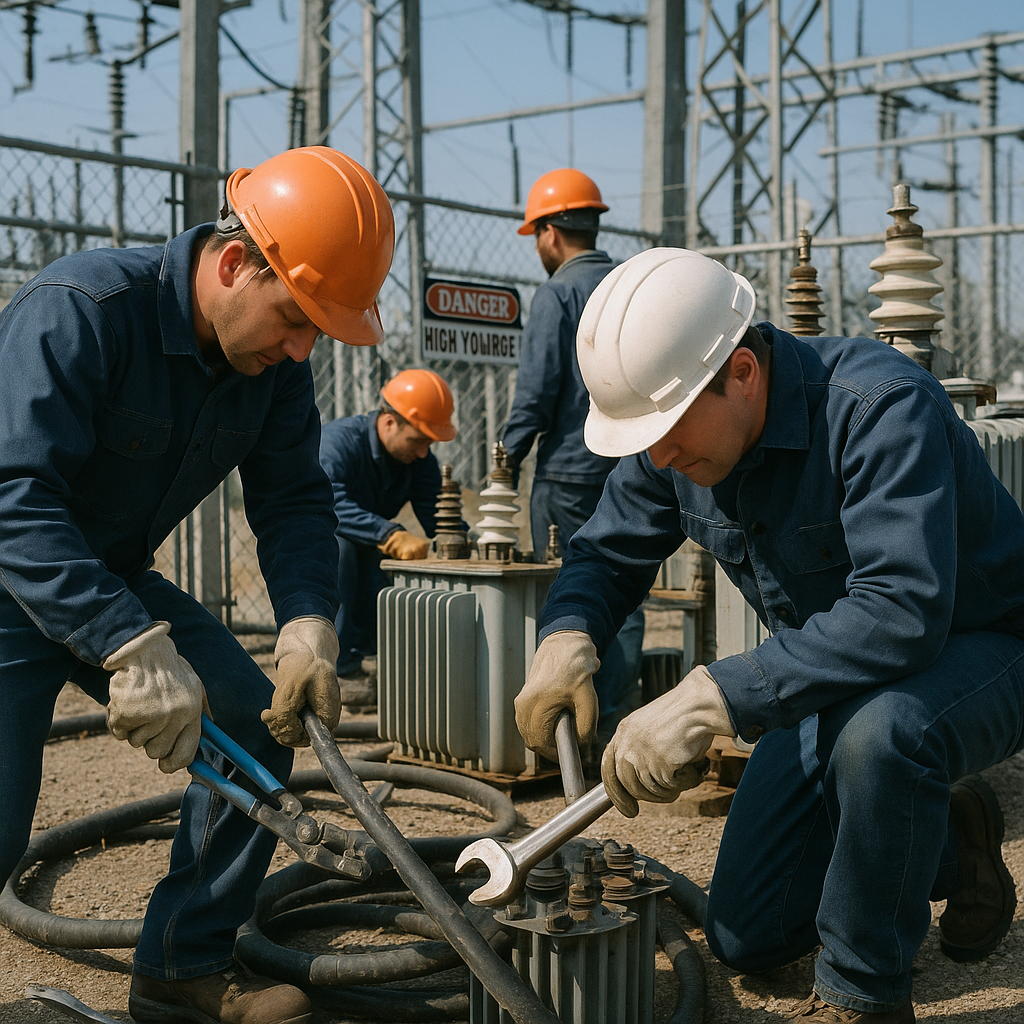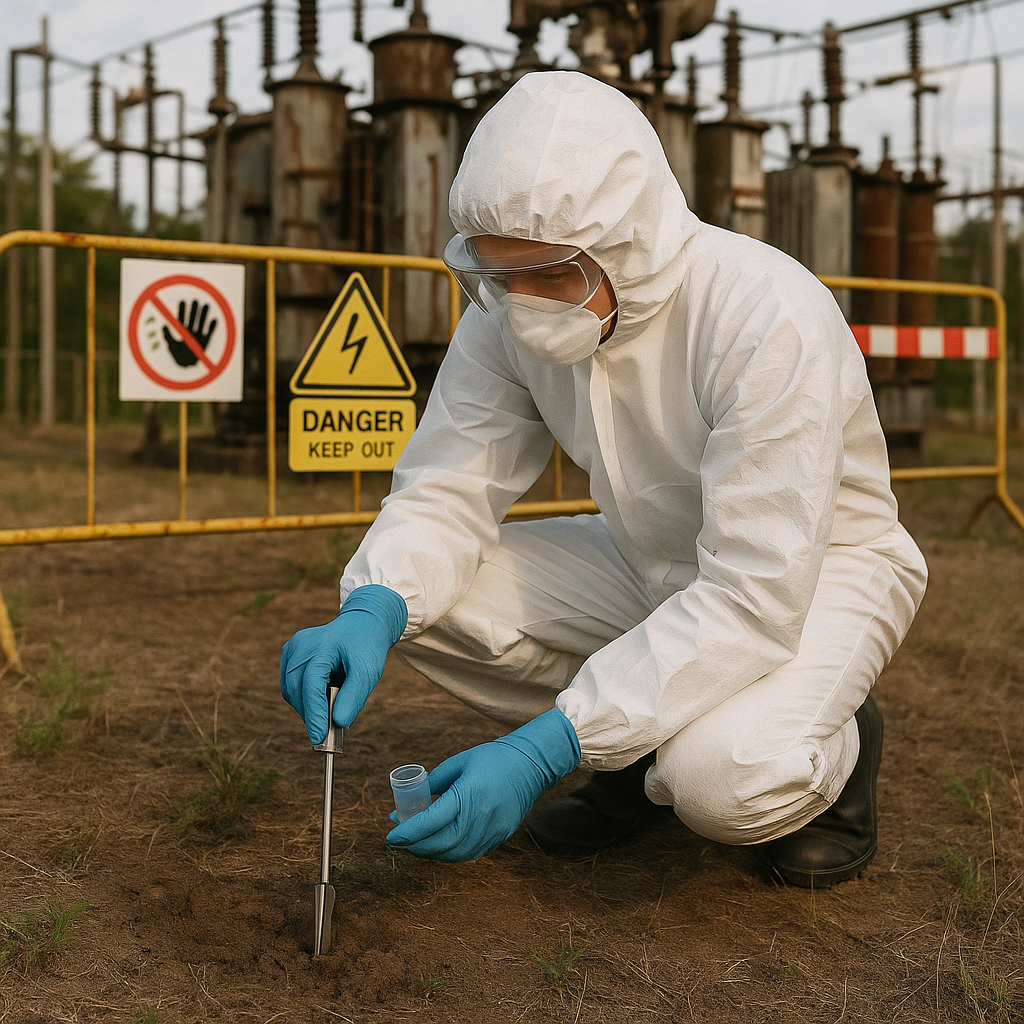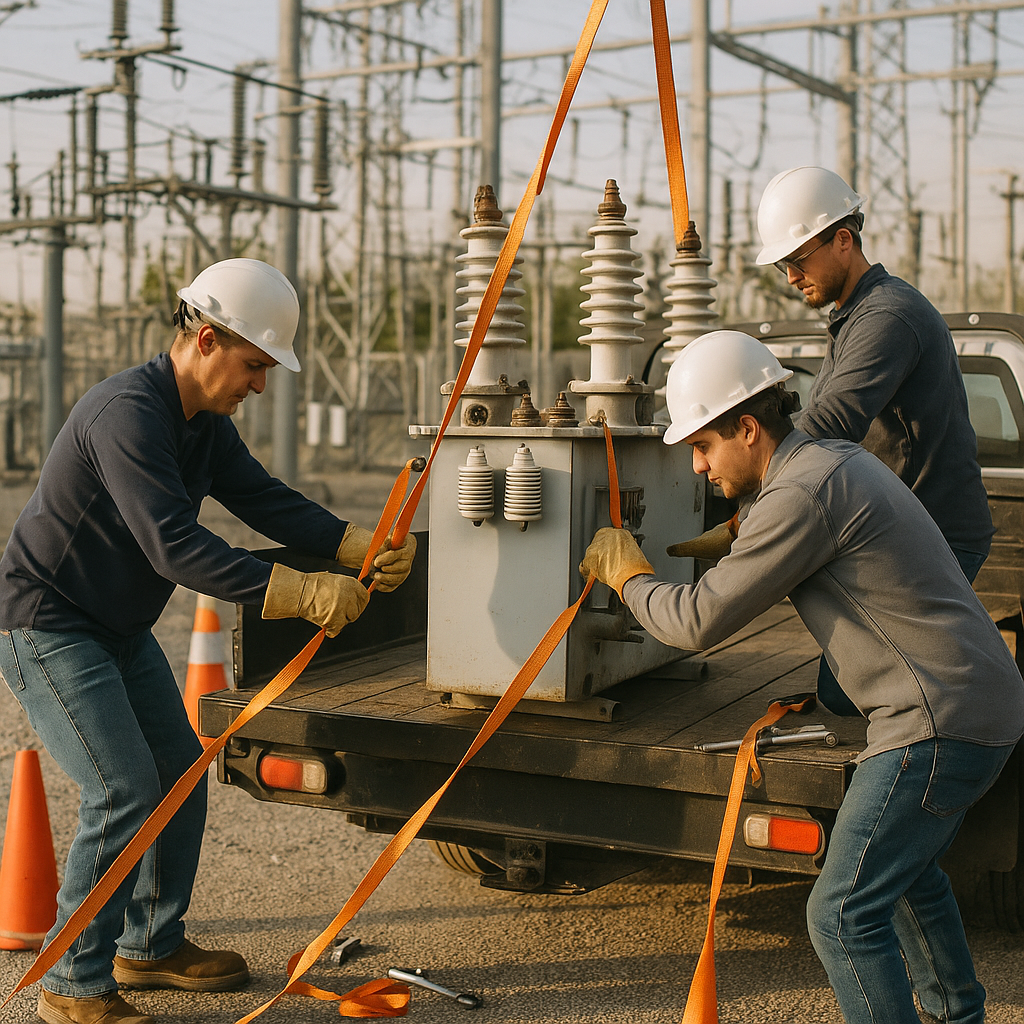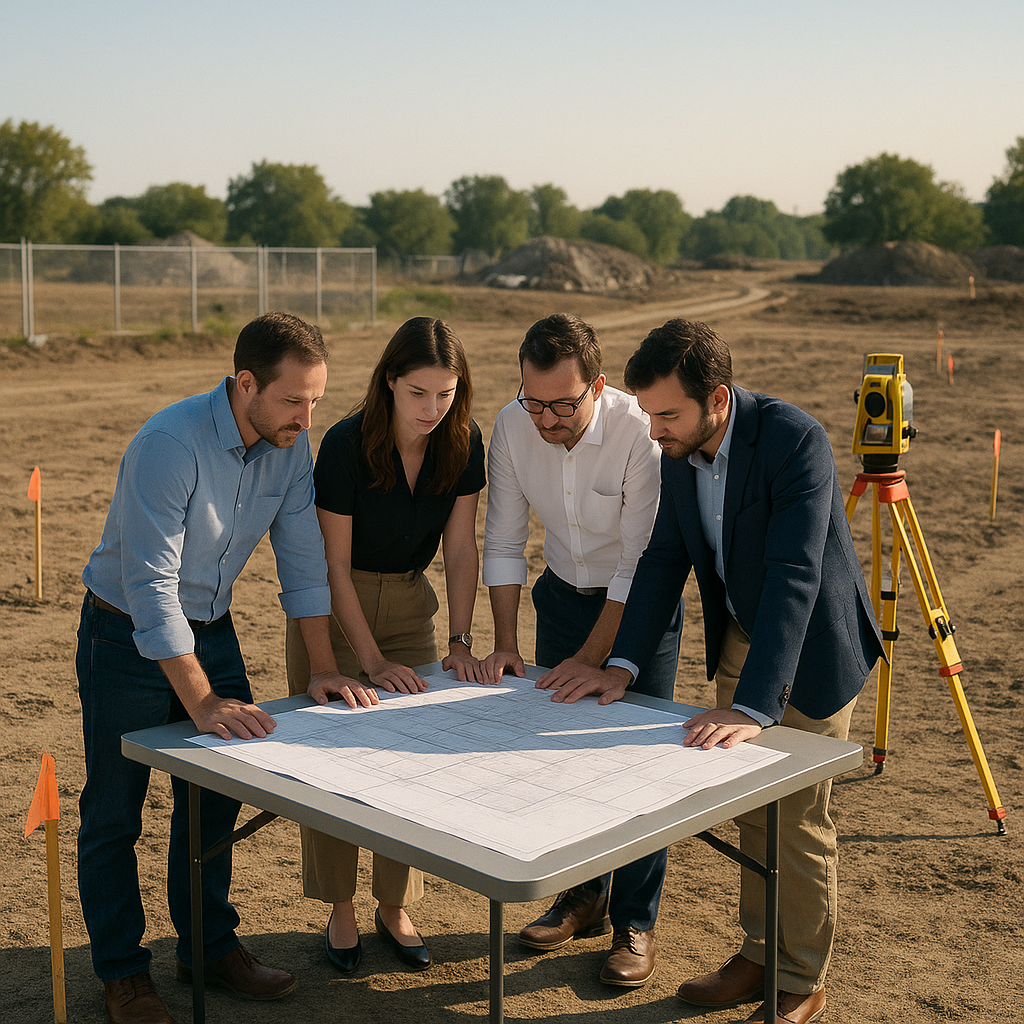5901 Botham Jean Blvd, Dallas, TX 75215
What is Power Substation Decommissioning?
July 30, 2025Power substation decommissioning involves safely shutting down and dismantling an electrical substation at the end of its operational life. This complex procedure includes de-energizing the substation, removing equipment and structures, and preparing the site for potential future use or restoration.
When a power substation reaches the end of its useful life, it undergoes a comprehensive decommissioning process. This critical transition occurs when the facility no longer meets operational requirements or needs replacement due to system upgrades. The process begins with powering down the facility and disconnecting it from the electrical grid, requiring careful planning to avoid disruptions to the broader power distribution network.
The decommissioning process involves several key steps: disconnecting and removing external equipment, draining and testing of transformer oil, dismantling core components, and final site cleanup. These steps ensure valuable materials are salvaged for recycling while hazardous substances are properly managed. Environmental compliance is a priority throughout, with special attention to preventing contamination from transformer oils and other potentially harmful substances.
What Are the Key Steps in Decommissioning a Power Substation?

Decommissioning a power substation requires a methodical approach to safely dismantle facilities that once housed high-voltage electrical equipment. The process involves several sequential steps that must be carefully planned and executed to ensure safety and environmental compliance.
Planning and Preparation
Before any physical work begins, comprehensive planning is essential. This includes documenting substation components in detail, conducting environmental assessments, and securing necessary permits. Project managers must develop a timeline that accounts for potential challenges, such as weather disruptions or the discovery of additional hazardous materials.
Planning also involves coordinating with utility companies and regulatory agencies. Stakeholders must be notified well in advance of the decommissioning start date. This coordination helps prevent disruptions to the electrical grid and ensures compliance with local regulations.
De-energizing and Isolation
The first physical step in decommissioning is shutting down and de-energizing the facility, requiring strict adherence to safety protocols. Workers must disconnect the substation from the generation tie line and coordinate with local utilities to ensure no disruption occurs in the electric utility system.
Once the main power is disconnected, all circuits must be verified as de-energized using appropriate testing equipment. The substation must then be physically isolated from the grid through visible breaks and grounding to prevent accidental re-energization. This step creates a safe environment for the subsequent equipment removal phase.
Equipment Removal and Dismantling
After the facility is safely de-energized, specialized teams begin removing valuable equipment. Transformers, circuit breakers, switches, and control panels are carefully disconnected and removed. This equipment may be refurbished for reuse at other facilities or processed for recycling.
Special attention is paid to transformers containing oil, which must be drained before removal to prevent spills. Junction boxes and underground cables are excavated and removed based on depth requirements. Typically, cables less than three feet deep in non-agricultural areas and less than four feet deep in agricultural areas are removed, while deeper cables may be abandoned in place.
Hazardous Materials Management
Power substations often contain hazardous materials that require careful handling and disposal. These may include:
- Transformer oil, which may contain polychlorinated biphenyls (PCBs)
- Lead-based paint on older structures
- Mercury from switches and gauges
- Asbestos in building materials
- Batteries containing acid or heavy metals
Each hazardous material requires specific handling procedures and must be transported to approved facilities for disposal or recycling. Environmental testing may be required throughout this process to ensure no contamination occurs during removal operations.
Structure Demolition
Once equipment and hazardous materials are removed, the physical structures can be demolished. This includes control buildings, foundations, fencing, and support structures. Concrete foundations are typically removed to a depth of at least three feet below grade in non-agricultural areas and four feet in agricultural areas.
Demolition creates significant debris that must be sorted for recycling or disposal. Metal components are typically recycled, while concrete may be crushed for use as fill material or transported to appropriate disposal facilities.
Site Restoration
The final step involves returning the site to a condition suitable for future use. This begins with backfilling excavated areas with clean, compatible fill material compacted to match surrounding soil density. Topsoil is then added and graded to establish proper drainage patterns.
Vegetation is established through seeding with appropriate plant species to prevent erosion and restore habitat. In agricultural areas, restoration follows specific guidelines to ensure the land can return to productive farming. Monitoring continues after restoration to ensure vegetation becomes established and no erosion occurs.
Environmental Monitoring and Compliance
Throughout the decommissioning process, environmental monitoring ensures compliance with applicable regulations. This includes testing soil and groundwater for potential contamination from transformer oils, fuels, or other hazardous materials.
Documentation of the entire process, including disposal records for hazardous materials, is maintained for regulatory compliance. In some cases, long-term monitoring may be required, particularly if contamination was discovered and remediated during the process.
| Phase | Typical Timeframe |
| Planning and Preparation | 1-2 months |
| De-energizing and Isolation | 1 month |
| Equipment Removal and Dismantling | 2-4 months |
| Hazardous Materials Management | Concurrent with equipment removal |
| Structure Demolition | 1-2 months |
| Site Restoration | 2-3 months |
| Environmental Monitoring and Compliance | 6-12 months (ongoing) |
Successful decommissioning requires expertise in electrical systems, environmental regulations, and project management. By following these structured steps, substation sites can be safely returned to productive use while minimizing environmental impact and maximizing material recovery and recycling.
How Are Environmental and Safety Concerns Addressed?

Environmental and safety considerations are central to every substation decommissioning project. Careful planning and execution are required to protect workers, the public, and surrounding ecosystems. Proper handling of hazardous materials is a top priority in any decommissioning plan.
Removing transformer oils, PCBs, and other potentially harmful substances follows strict protocols set by federal and state guidelines. These materials must be collected in specialized containers and transported to approved disposal facilities. Safety teams thoroughly drain all fluids from equipment before dismantling begins to prevent soil or groundwater contamination.
Erosion control measures are crucial for protecting the environment during the decommissioning process. Teams install silt fences, straw bales, and other stormwater control structures around work areas. These barriers prevent erosion and keep sediment out of nearby water sources, maintaining water quality throughout the project.
Worker safety protocols mirror construction practices, with extra precautions for handling aged equipment. Personnel receive comprehensive training in hazard identification and safe work practices, including the use of personal protective equipment (PPE), recognition of electrical hazards, and emergency response procedures. Daily safety briefings reinforce these practices.
Environmental assessments often precede decommissioning to identify any pre-existing contamination or specific environmental concerns. These assessments help determine if remediation will be needed based on future land use plans. For example, land returning to agricultural use may need more extensive soil remediation than land headed for industrial development.
Site restoration follows decommissioning to prepare the land for its intended future use. This typically involves backfilling excavated areas with clean, compatible fill, grading to restore original contours, and establishing suitable vegetation. In agricultural areas, restoration includes soil decompaction to a depth of 18 inches to ensure proper growing conditions.
Stormwater management continues throughout restoration. Teams monitor reseeded areas to ensure vegetation establishes effectively for erosion control. Once vegetation takes hold, temporary erosion control measures can be removed. The monitoring period may extend several months post-completion to confirm successful restoration.
Noxious weed management is another critical aspect of environmental responsibility in site restoration. Regular monitoring and control prevent invasive species from establishing in disturbed areas. This may include manual removal, mechanical treatment, or careful herbicide application following regulations.
Waste minimization and recycling efforts significantly reduce the environmental impact of decommissioning projects. Equipment parts with valuable metals like copper and aluminum are separated for recycling. Concrete foundations can be crushed and repurposed as road base material. These practices align with circular economy principles, reducing the volume of material sent to landfills.
Compliance documentation provides final verification that all environmental and safety requirements have been met. This includes waste disposal manifests, soil testing results, and final inspection reports. Such documentation protects all stakeholders and confirms that the site has been properly remediated for its intended future use.
No table output available
What Happens to the Equipment and Materials?

During decommissioning, substation equipment and materials undergo careful management to maximize resource recovery. The decommissioning team first disconnects and drains fluids from transformers and other oil-containing equipment. This oil is sampled, tested, and either reconditioned for reuse or properly disposed of following environmental regulations.
Transformers are among the most valuable components in a substation. These large units contain significant amounts of copper, steel, and other metals with substantial recycling potential. Depending on their condition, transformers may be reconditioned for reuse at other facilities or dismantled for material recovery. This process typically involves removing external components like radiators and insulators before extracting the core and coil assembly.
Switches, circuit breakers, and electrical control devices follow a similar path. After fluid removal, these components are evaluated for potential reuse. Those that cannot be reconditioned are broken down into constituent materials. Copper conductors from cables and equipment are particularly valuable in the recycling stream, with most recycling facilities eager to recover this high-value metal.
Concrete foundations require specialized handling during decommissioning. Crews typically excavate these foundations to a depth of three feet below grade, often using heavy equipment like backhoes and hydraulic hammers. The concrete is then broken into manageable pieces, with reinforcement steel removed for separate recycling. The crushed concrete can be reused as aggregate in road construction or other building projects.
Ancillary structures such as control buildings are dismantled rather than demolished. This approach allows for the recovery of structural steel, aluminum, and other building materials. Even gravel from substation yards is often collected, cleaned, and repurposed at other construction sites.
Throughout the decommissioning process, environmental protection is paramount. Specialized teams monitor for potential contaminants, implement erosion control measures, and ensure no residual materials are left behind. Any hazardous substances encountered are properly contained and transported to approved disposal facilities. This comprehensive approach transforms potential waste into valuable resources while protecting the surrounding ecosystem.
The final phase of equipment and material management involves thorough site cleanup and verification. Teams conduct systematic inspections to ensure all materials have been properly removed or remediated. This often includes testing soil samples to confirm no contamination remains. When complete, the site is typically regraded, reseeded with native vegetation, and prepared for its next use or for natural reclamation.
What Are the Future Considerations for the Decommissioned Site?

The transformation of a decommissioned substation site presents a valuable opportunity for communities to reclaim and repurpose land beneficially. The future of these sites depends on local regulations, environmental conditions, and community priorities. With a strategic vision, these areas can evolve from industrial relics into valuable community assets.
Successful site transformations often result from thorough stakeholder engagement processes. These processes bring together perspectives from local residents, businesses, environmental experts, and government officials to create sustainable redevelopment plans. Through collaboration, communities can identify options that balance economic opportunities with environmental restoration and social benefits. Each site presents unique possibilities, from renewable energy production facilities to mixed-use developments, recreational spaces, or full restoration to natural greenfield states.
For expert guidance on transforming decommissioned sites into valuable recycling opportunities, contact Okon Recycling at 214-717-4083. Our team can help you navigate regulatory requirements and implement responsible recycling practices that extract maximum value from materials while ensuring environmental compliance.
